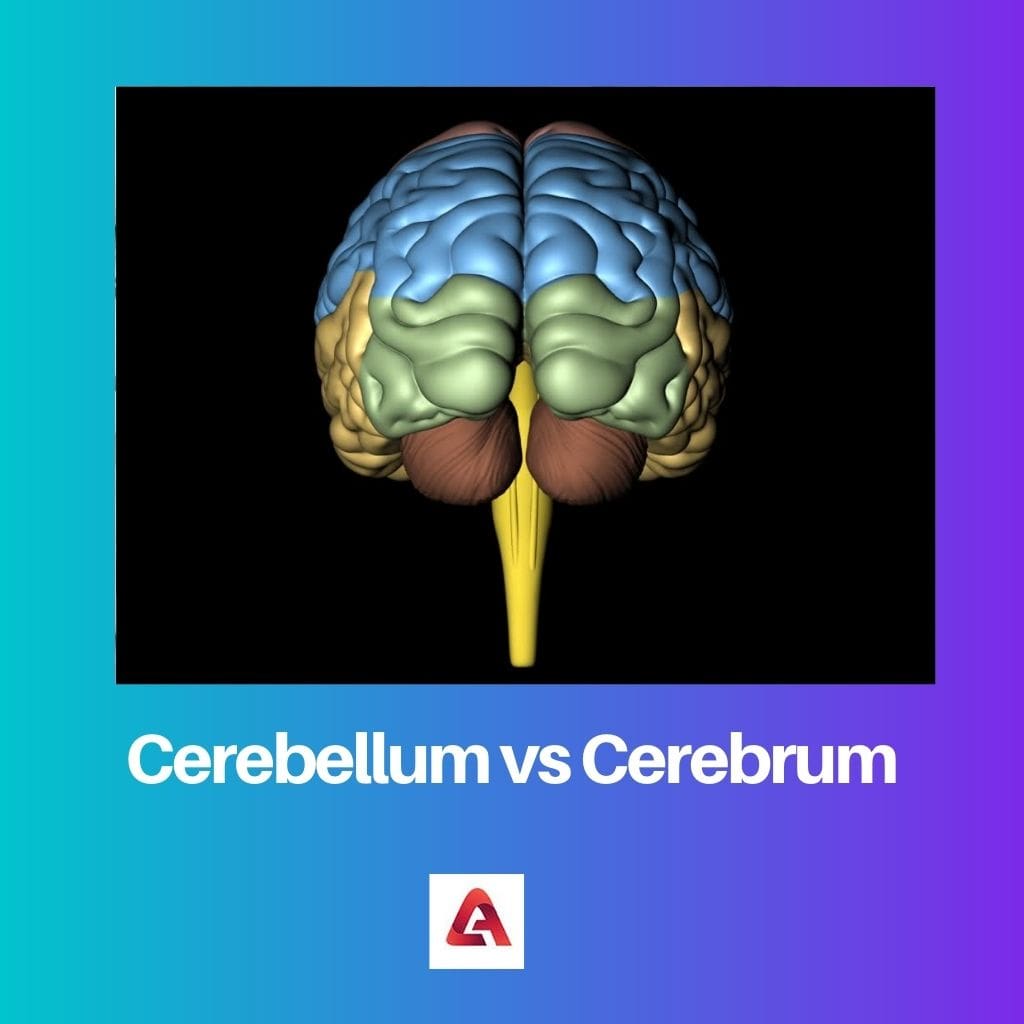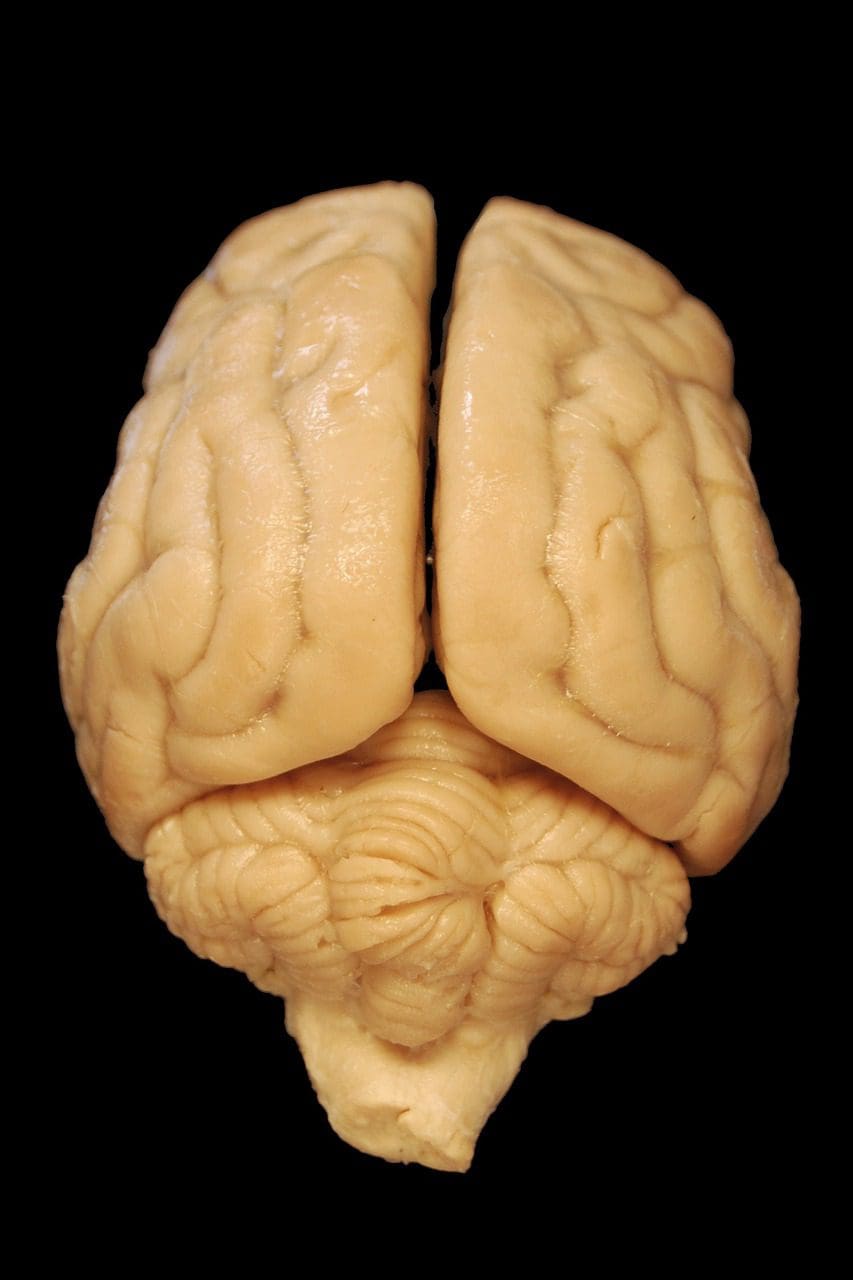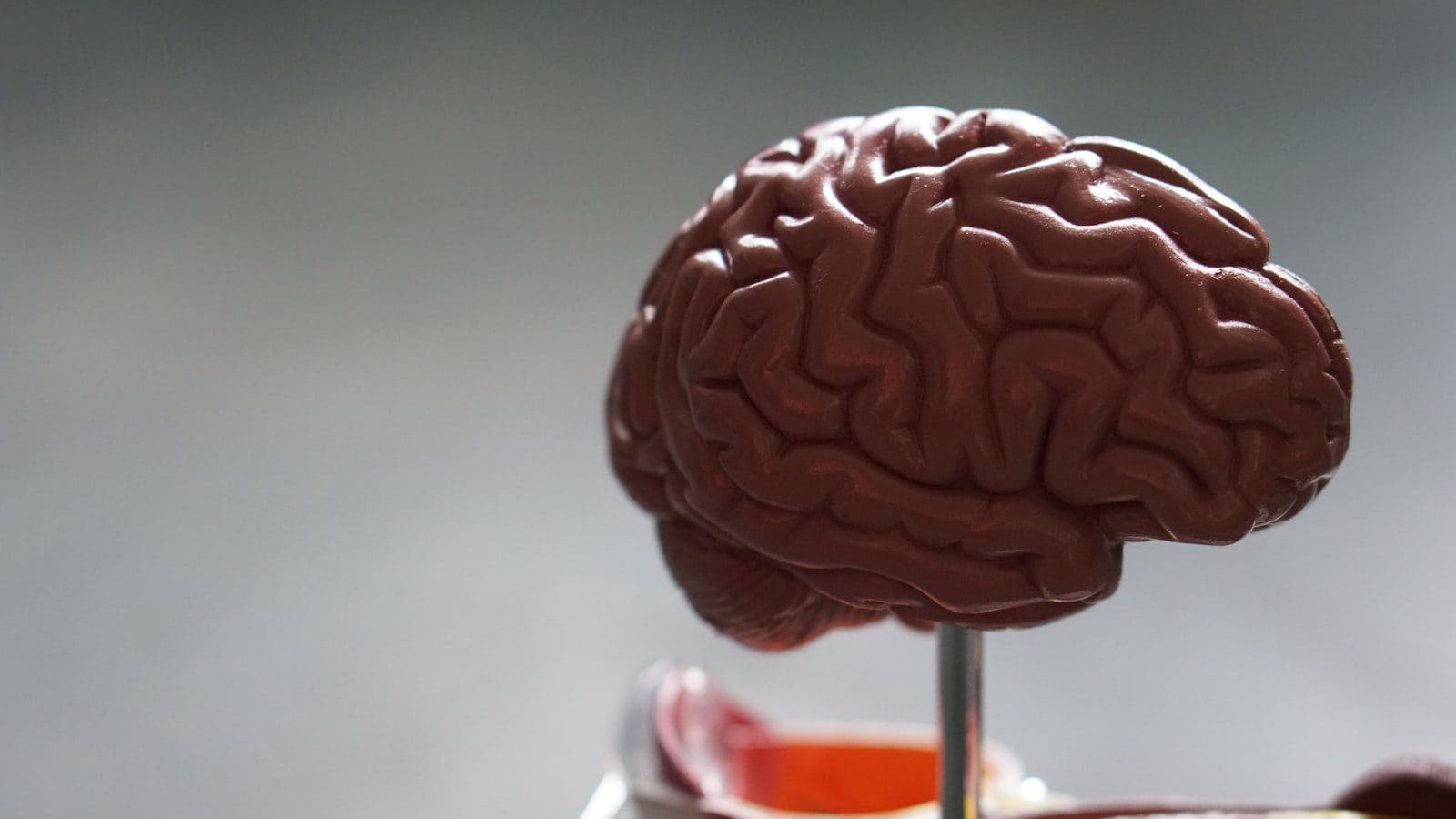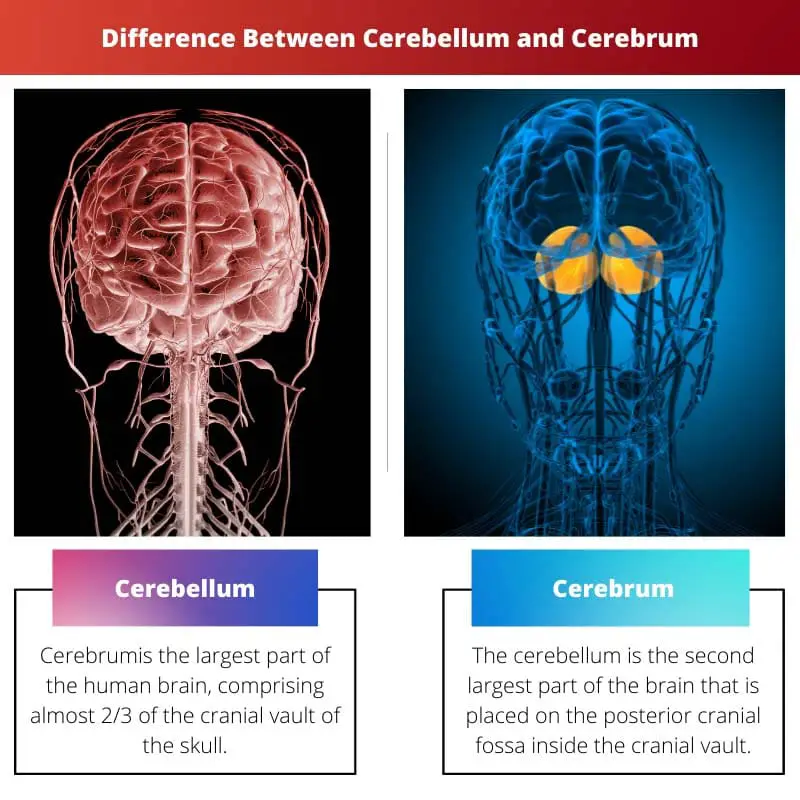The cerebellum is primarily responsible for coordination, precision, and timing of movements. In contrast, the cerebrum plays a central role in higher cognitive functions such as thinking, memory, and emotion regulation. While the cerebellum coordinates muscle activity, the cerebrum orchestrates complex processes like decision-making and language.
Key Takeaways
- The cerebellum is responsible for motor coordination, balance, and muscle tone, while the cerebrum is involved in higher cognitive functions, including thought and action.
- The cerebellum is located at the base of the brain, while the cerebrum is the largest part of the brain, occupying the upper region.
- The cerebrum is divided into two hemispheres, each with four lobes, while the cerebellum has two hemispheres and three lobes.
Cerebellum vs Cerebrum
The cerebellum, located at the base of the brain, is responsible for coordinating movement, balance, and fine motor control. The cerebrum is the most significant part of the brain and is responsible for conscious thought, perception, language, and voluntary muscle control.

Comparison Table
| Feature | Cerebellum | Cerebrum |
|---|---|---|
| Size | Smaller (11% of brain) | Larger (83% of brain) |
| Location | Hindbrain | Forebrain |
| Function | Coordinates movement, balance, and posture | Controls higher-level functions like thinking, memory, emotion, and language |
| Structure | Two cerebellar hemispheres connected by peduncles | Two cerebral hemispheres connected by corpus callosum |
| Neural processing | Mainly unconscious and automatic | Both conscious and unconscious |
| Learning | Implicit (unconscious) | Explicit (conscious) and implicit |
| Memory | Primarily procedural (motor skills) | Declarative (facts, events) and procedural |
| Development | Develops rapidly in early childhood | Develops gradually throughout life |
| Damage | Can lead to problems with coordination, balance, and speech | Can lead to problems with thinking, memory, and language |
What is Cerebellum?
The cerebellum, located at the back of the brain beneath the cerebrum, is a vital structure involved in coordinating voluntary movements, maintaining posture, and regulating balance. Despite its small size compared to the cerebrum, the cerebellum contains a significant number of neurons and intricate neural circuitry.
- Anatomy: The cerebellum consists of two hemispheres connected by a structure called the vermis. It has a highly folded surface, increasing its surface area for more neural connections. The outer layer, called the cerebellar cortex, contains densely packed cells known as Purkinje cells, which play a crucial role in integrating sensory information and coordinating movement.
- Function: The primary function of the cerebellum is motor coordination. It receives input from various parts of the brain and the body, including the cerebral cortex, spinal cord, and sensory systems. By processing this information, the cerebellum fine-tunes motor commands sent from the brain to ensure smooth, precise, and coordinated movements. It helps regulate muscle tone and timing of muscle contractions, allowing for fluid motion and posture control.
- Role in Motor Learning: In addition to coordinating ongoing movements, the cerebellum also contributes to motor learning and skill acquisition. It compares the intended movement with the actual movement outcome, adjusting and refining motor commands accordingly through a process called motor adaptation. This ability allows individuals to improve motor skills through practice and experience.
- Non-Motor Functions: Beyond motor control, emerging research suggests that the cerebellum also plays a role in cognitive functions, including language, attention, and emotion regulation. Connections between the cerebellum and the cerebral cortex support these non-motor functions, although the precise mechanisms are still under investigation.
- Clinical Implications: Damage or dysfunction of the cerebellum can lead to a range of motor deficits known as ataxia, characterized by problems with coordination, balance, and gait. Other symptoms may include tremors, slurred speech, and difficulties with fine motor skills. Understanding the role of the cerebellum in motor control and cognition is crucial for diagnosing and treating various neurological disorders.

What is Cerebrum?
The cerebrum is the largest part of the brain and is located at the topmost region of the central nervous system. It is divided into two hemispheres, each consisting of four lobes: the frontal, parietal, temporal, and occipital lobes. The cerebrum is responsible for a wide range of higher cognitive functions, including conscious thought, reasoning, memory, and voluntary movement control.
Within the cerebrum, the cerebral cortex, also known as the neocortex, is the outermost layer and is heavily folded to increase surface area. This folding allows for a greater number of neurons and therefore increased cognitive capabilities. The cortex is divided into functional areas responsible for specific tasks, such as the sensory areas for processing sensory information, the motor areas for controlling voluntary movement, and association areas for integrating information from various sources and facilitating complex cognitive processes like language, decision-making, and problem-solving.
Additionally, the cerebrum contains deep structures such as the basal ganglia, which are involved in motor control and procedural learning, and the limbic system, which plays a role in emotions, motivation, and memory formation.

Main Differences Between Cerebellum and Cerebrum
- Size and Location:
- Cerebrum: Largest part of the brain, located at the topmost region of the central nervous system, divided into two hemispheres.
- Cerebellum: Smaller structure located beneath the cerebrum, at the back of the brain.
- Function:
- Cerebrum: Responsible for higher cognitive functions such as conscious thought, reasoning, memory, and voluntary movement control.
- Cerebellum: Primarily responsible for coordination, precision, and timing of movements, as well as motor learning and posture maintenance.
- Structure:
- Cerebrum: Consists of two hemispheres, each with four lobes (frontal, parietal, temporal, occipital) and a highly folded outer layer called the cerebral cortex.
- Cerebellum: Has a highly convoluted surface, with folds called folia, and contains smaller structures like the cerebellar cortex and deep cerebellar nuclei.
- Functionality:
- Cerebrum: Integrates sensory information, processes higher cognitive functions, and controls voluntary movements.
- Cerebellum: Coordinates muscle activity, regulates motor functions, and plays a role in motor learning, balance, and posture.


This article provides a comprehensive overview of the differences between cerebellum and cerebrum, and the importance of each in motor coordination and higher cognitive functions. Well written and informative!
This article dives deep into the anatomical and functional aspects of the cerebellum, shedding light on its role in coordinating movements and motor learning. A great resource for understanding the brain’s complexity.
Couldn’t agree more. The in-depth exploration of the cerebellum’s involvement in motor control and cognitive processes provides a holistic view of its functions.
Absolutely, the detailed description of the cerebellum’s structure and functions is invaluable for gaining a comprehensive grasp on its significance in brain functioning.
It’s interesting to learn that the cerebellum also has non-motor functions related to cognitive processes such as language and emotion regulation. The brain’s complexity is truly astounding.
Indeed, the multifaceted nature of the cerebellum’s functions challenges traditional views of its role in the brain.
Absolutely, it’s impressive how the cerebellum’s involvement extends beyond motor control to influence higher-order cognitive processes.
The article effectively outlines the structural differences and functional disparities between the cerebellum and cerebrum, making it accessible for readers to comprehend their roles in brain functioning.
Completely agree. The article’s clarity in differentiating the cerebellum and cerebrum fosters a comprehensive understanding of their distinct roles in the brain.
Absolutely, the article succinctly conveys the unique features and functions of the cerebellum and cerebrum, facilitating a deeper understanding of their contributions to brain processes.
The inclusion of clinical implications due to damage or dysfunction of the cerebellum highlights its critical role in maintaining motor functions. This article educates about the potential impact of cerebellar deficits on everyday activities.
Absolutely, understanding the consequences of cerebellar damage is essential for diagnosing and addressing motor coordination issues.
Definitely, gaining awareness of the clinical implications of cerebellar dysfunction enhances our understanding of neurological disorders and their management.
The comparison table is very useful in highlighting the key differences between the cerebellum and cerebrum. It provides a clear, side-by-side understanding of their structural and functional disparities.
I agree, having a visual aid to compare and contrast their characteristics provides a clearer understanding of their unique roles in the brain.
The differentiation between the functions of the cerebellum and the cerebrum is crucial for understanding brain pathology and neurodegenerative diseases. This article explains it concisely and effectively.
Absolutely, grasping these differences helps in diagnosing and treating various neurological conditions that affect motor coordination and cognitive function.
The comprehensive overview of the cerebrum’s functions and cognitive capabilities helps in understanding its significance in higher-level brain activities. Informative and enlightening content.
I couldn’t agree more. The article’s detailed coverage of the cerebrum’s roles is valuable for appreciating its extensive contributions to cognitive functions.
Absolutely, the in-depth exploration of the cerebrum’s functions broadens our understanding of its crucial role in cognition and behavior.
The in-depth explanation of the cerebral cortex and its subdivisions within the cerebrum provides a thorough understanding of its crucial role in cognitive processes. A detailed and illuminating read.
Absolutely, the article’s focus on the cerebrum’s intricate structures and functions enriches our understanding of its involvement in higher cognitive functions.
Indeed, the detailed breakdown of the functions within the cerebrum enhances our comprehension of its multifaceted contributions to cognitive processes.
It seems that the cerebellum and cerebrum have very distinct roles in the brain, it’s fascinating how they work together to maintain bodily functions and process complex thoughts.
Yes, the intricate interplay of these two brain regions is truly remarkable. They each have their specific functions, but also rely on one another for overall functioning.